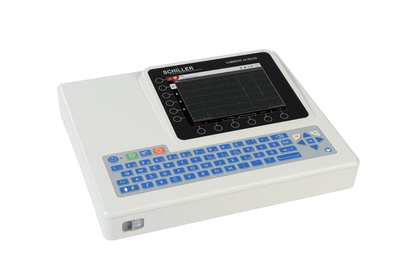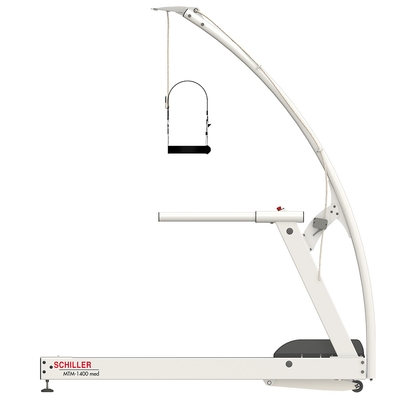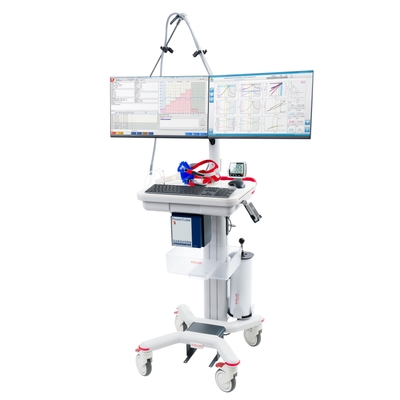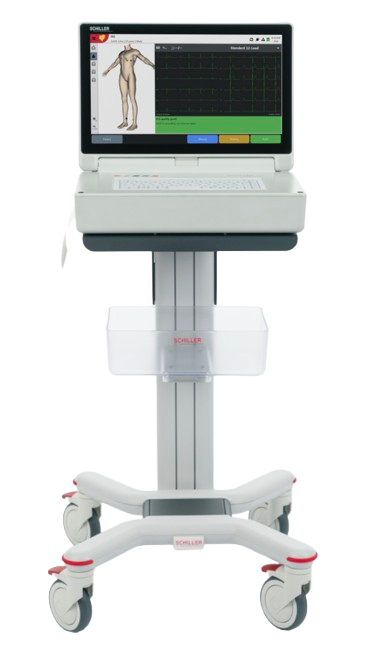
Medical Rehabilitation Beloergometer ERG 910 plus / ERG 911 plus
- On order
Department specialist consultation
+38 (068) 165 87 94| Direction: | Rehabilitation |
|---|---|
| Producer: | SCHILLER |
| Country: | Switzerland |
ERG 910 plus / ERG 911 plus
The ERG 910 plus and ERG 911 plus bicycle ergometers were developed for use in the cardiology sector.
The devices are used to perform specific exercises during ergometric examinations and therapeutic applications. All basic exercise data (such as blood pressure, heart rate, pedal speed, color-coded information on the correct pedal speed) are displayed in a compact format.
FEATURES
- Two modes of operation:
- Remote control of the host device (ECG, PC, ...)
- Autonomous operation with user-defined step-by-step protocol or manual load control - Display rotates (180°), steering wheel is adjustable (360°)
- Bluetooth and RS-232 connection
- Ergonomic sitting position for patients from 1.40 m to 2.10 m tall
- Patient weight up to 160 kg
- Low frame for easy access
- Maintenance-free and almost silent thanks to belt drive
- Stable steel tube construction, minimal use of floor space
- Optimal rotating weight for a pleasant pedaling experience
- Connection to a 230 V network
Options and accessories
- Blood pressure measurement with QRS trigger
- Connection to the 115 V network
- Children's saddle and pedals for patients from 1.20 m
- With stabilizer for patients weighing more than 140 kg or over 190 cm in height
ERG 910 plus - Load range 20 - 500 W, optional 20 - 999 W
ERG 911 plus - Load range 20 - 999 W
- Adjustable handle height
- Electrically adjustable saddle height (optional)
- SpO₂ module
Possible indications for ECG with load
- Diagnostic clarification of chest pain (angina pectoris, including vasospastic angina) in myocardial ischemia (insufficient blood supply) or coronary heart disease
- For patients with cardiac risk factors, such as suspected coronary heart disease and hypertension (high blood pressure)
- After a myocardial infarction to assess prognosis, physical activity, medical treatment and cardiac rehabilitation
- Before and after revascularization (restoration of blood supply) using interventional methods or coronary artery bypass grafting surgery to assess residual ischemia
- Assessment of exercise capacity, e.g. for expert reports
- Examinations of men over 40 years of age or women over 50 years of age who are asymptomatic before exercise
- For professions where the medical condition affects public safety (e.g. bus drivers, pilots, ...)
- For patients with cardiac arrhythmia that manifests itself only during physical activity (e.g. ventricular tachycardia in case of arrhythmogenic right ventricular disease, coronary heart disease)
- Exercise trials for patients with frequency-adaptive pacemakers to determine the ideal intervention frequency.
- Confirmation of undesirable proarrhythmic effects - increased arrhythmia during antiarrhythmic therapy
Indications for cardiac rehabilitation
- previous heart attack
- stable angina pectoris
- coronary artery bypass grafting
cardiomyopathy - PCI (percutaneous coronary intervention)
compensated heart failure
- Power range from:20 to 400 W
- Load range:20 -999 W
- Connection to a:230 V network
- Patient weight up to:160 kg
- Medical institutions
- Rehabilitation centers
.jpg)
.jpg)


